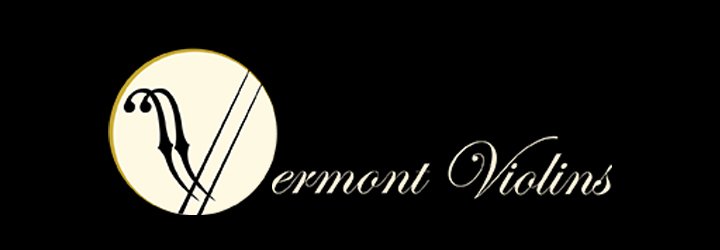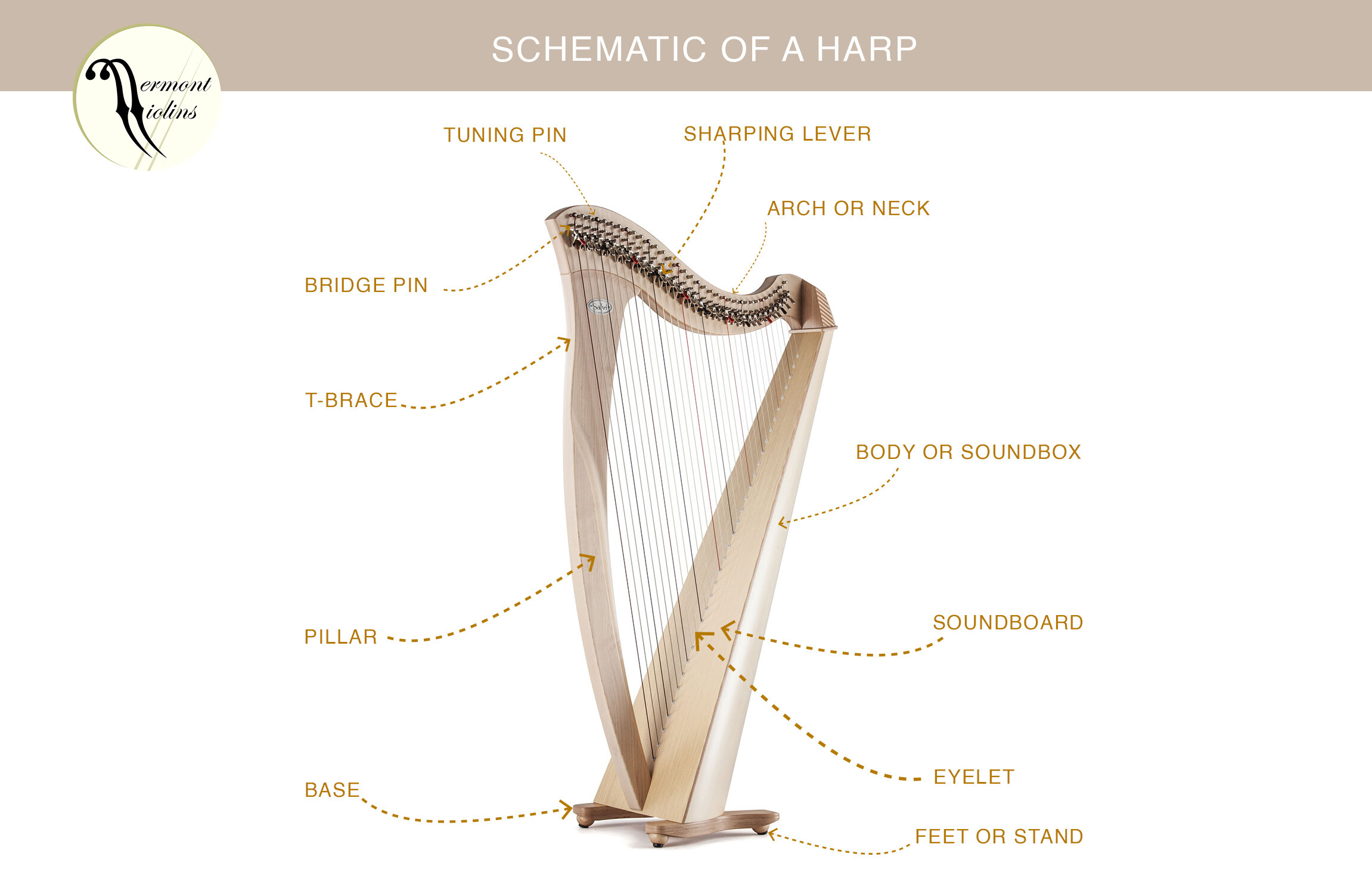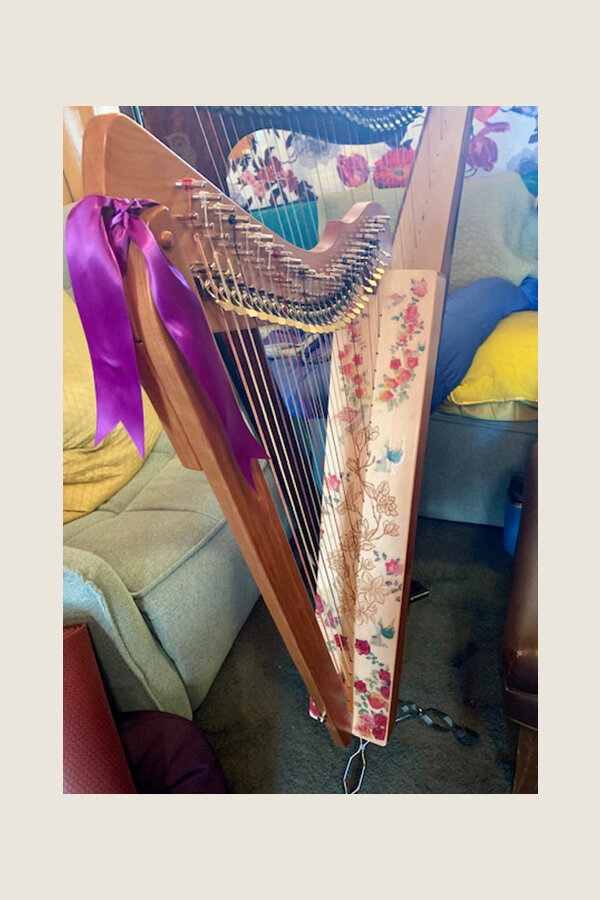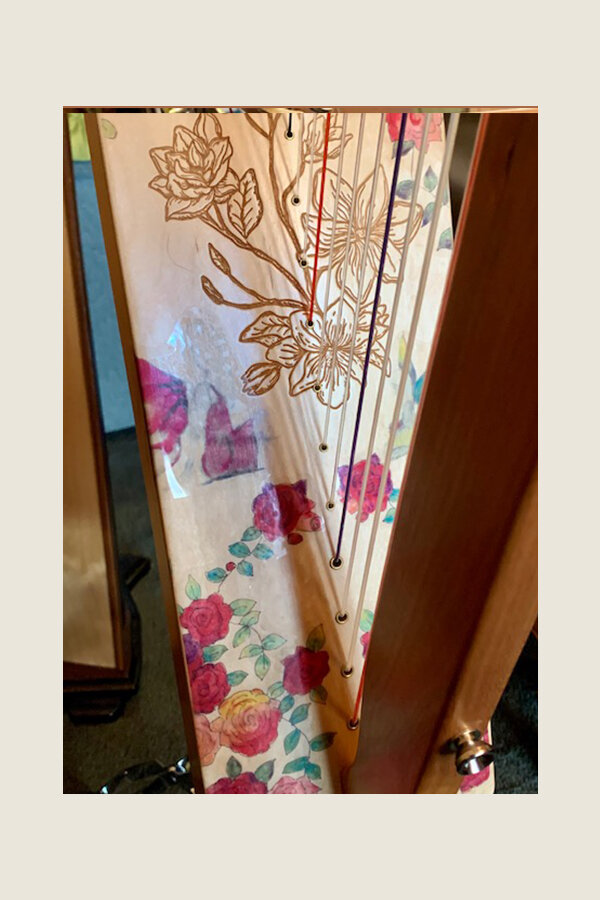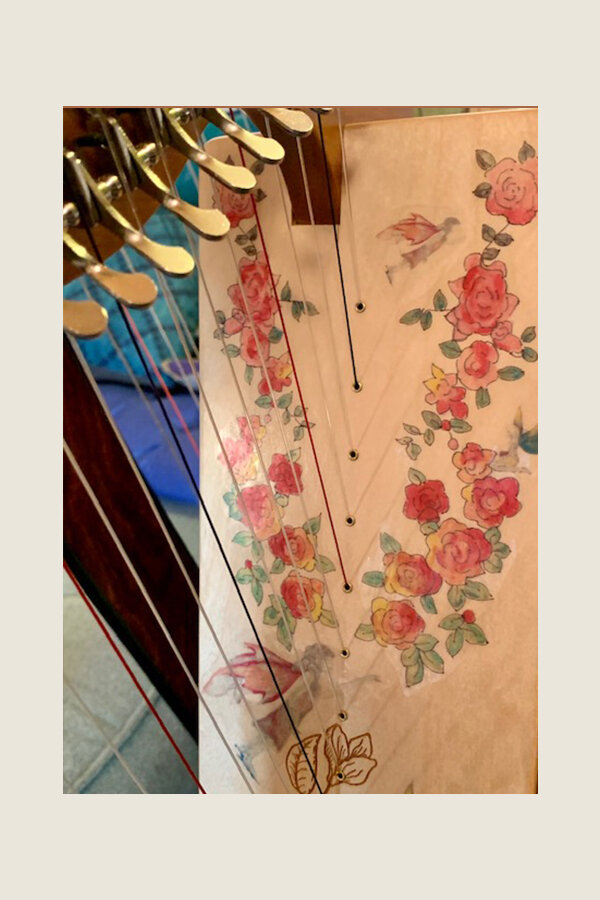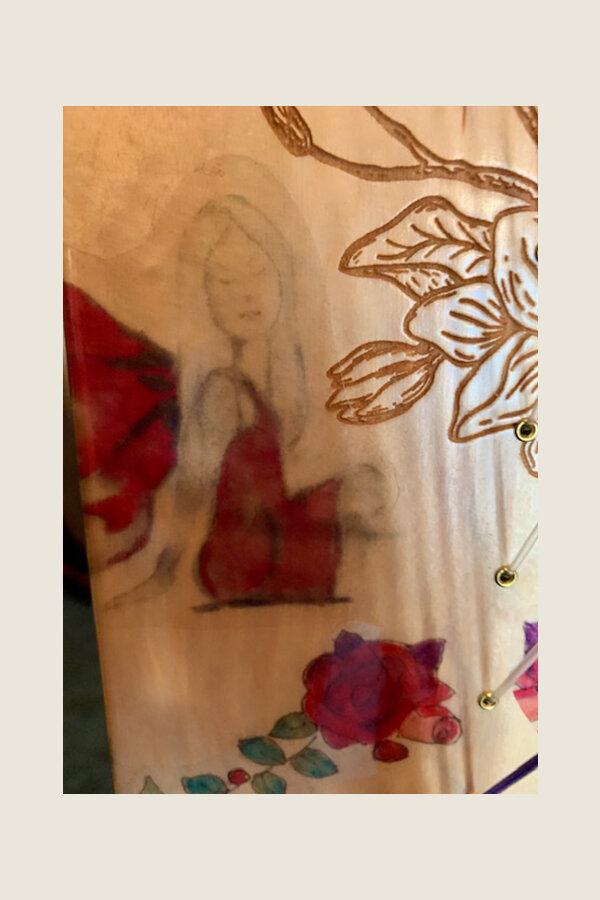Beginner Guide For Harps
Getting Started With Harps!
Whether you are new to music or have a lifetime of playing behind you, the Celtic Harp is one of the most immediately rewarding instruments you can play.
We’re often asked: “Is the harp difficult to learn?” and the answer is no.
Like the game, it might take a lifetime to master, but the harp’s gentle voice is forgiving; the notes come easily and whether you are playing melodies or harmonizing you’ll find the harp to be easily navigated to create a wonderful musical experience. And if you’ve ever played piano, well, the harp is a keyless piano so note reading will be a breeze. With some basic skills understood, you’ll be quickly playing music that will fill your home and soul with joy!
How To Choose a Harp? Getting Started…
How to get started? This is a quick introductory guide designed to help you navigate the various harp options available to you and guide you to your first instrument. We are here to help, so please ask questions as they arise. We are always available for questions at info@vermontviolins.com
First, we are going to limit the scope of our conversation to lever harps. Lever harps rely on small toggle switches at the top of the strings to sharpen a string (from “C” to “C#”, for example) and avoid the complicated pedal mechanism of the larger orchestral pedal harps. Lever harps come in a range of quality and prices and as such can be appropriate for all levels of players from beginner to professional; child to adult.
What are the Parts of a Harp?
A quick word about the language. A harp is a fairly simple instrument and consists of essentially four parts. The soundbox, which rests closest to your body, is the resonating chamber that amplifies the tone of the string as it is plucked. The top face of the soundbox is called the soundboard and is the most tonal part of the instrument. The wood choice of the soundboard will define the tone of the instrument as different woods vibrate differently. Rising from the floor of the harp in an upward curve is the pillar that supports the horizontal Arch or Neck at the top. Every harp maker has a different curve to the pillar and neck, the curves allow for structural support and create the desired length of each string which is knotted and strung inside the soundbox, passing through a small hole and extending to the lever and pin on the Neck.
The various shapes of the harp create personalities to each harp, different shapes create different visual effects and are part of the aesthetic experience. You may find as you look at various harps that you like a softly rounded shape, like Dusty Strings Ravenna’s, or you like a more angular sharper-pointed harp, like the Salvi Titan. Harps are beautiful and while you may not want to put the visual above the tonal in your ranking of important considerations, do remember that this harp will be a visual part of your home…so enjoy what it looks like…they are gorgeous!
How Much Does a Harp Cost?
Harps come in a range of prices from under $1k to over $6k…If you are starting out, you might want to limit your range from $1k to $4k for your first harp. In this range, you’ll find instruments that are beginner-oriented and instruments that you’ll play happily for a lifetime. The very inexpensive harp (under $1k, generally) are not recommended as they tend to be poorly made and not long for the world. If you are on a limited budget, consider a financing option to ensure that the harp you purchase can be a part of your musical journey for a long, long time. A quick side note: some harp makers give you the option of saving money by having your harp only partially (or not at all) levered. Don’t make the mistake of purchasing a partially levered harp: guarantee you’ll miss those missing levers and the money saved is not worthwhile in the long run. Just our opinion of course!
How Much Does a Harp Weigh?
One important consideration in what harp to purchase is size. Harps range in size and weight and depending on the space you have available and how much you will be transporting it, you may want to opt for a smaller or larger harp. In addition to weight and floor space, size will also relate to the number of strings the harp has. The Fullsicle harp from Rees, for example, is very small, lightweight (only 6.4 lbs!), and perfect for someone traveling around. Larger harps require of course more space and they can weigh considerably more. Standard weights for a full-size harp will run between 20-30 lbs, some larger models approaching 40 lbs. The good news is that even a large harp is still quite portable, but large harps start becoming more burdensome to move around and take up more room in the car.
What is the Best Harp to Buy for a Beginner?
There is no one answer to this as there are so many models to choose from it really depends on the player and the purchaser’s intent. All of our harps have been sold to beginners and professionals alike, so there are no hard and fast rules. For example, the Fullsicle from Rees is often considered a beginner’s harp, but we sold one to a traveling executive who wanted to spend lonely nights in the hotels playing his harp and loved the Fullsicle as he could put it in his suitcase!
Here are a few questions to ask yourself as you consider various options. First, What is your budget? Generous financing or rental options can expand your purchasing power, and it is often wise to take advantage of these offers to get what you truly want. But be mindful that there are always “better” harps out there and you can always be tempted beyond your comfort level, so as a beginner you should be able to find something between $1 and $4k…and many great options are at the lower end of that scale!
Second: are you purchasing a “get started” harp or your lifelong companion? If you are uncertain whether the harp is really your thing, a rental program that does not commit you to ownership (even as it allows you to build “equity” in the event you want to make a purchase) might be a great way to get started. But if you are ready to commit, but still uncertain of the depth of your commitment, look for a student harp that while it may not be your end-stop instrument, also won’t commit your budget higher than you want to go. Excellent options are the Fullsicles by Rees, the Ravenna’s by Dusty String, and the Mia by Salvi.
Of course, if you are ready for a lifetime companion and do not want to be upgrading anytime soon in the years ahead, go for a more professional model like the Dusty Strings Crescendo, or any of the harps from Lyon & Healy or Salvi.
Another question you can ask yourself is whether you think down the road you might be interested in a Pedal Harp? Pedal harpists often begin with a lever harp before making the commitment to a pedal harp (which involves a much higher investment). Salvi’s Gaia harp is a great option: it is high (pedal) tension and has string spacing akin to a pedal harp so it is a perfect gateway instrument to the pedal harps. The gut strings are powerful but warm and the 38 strings offer significant range. Salvi and Lyon & Healy also have an excellent trade-in program called “Bounty” which allows you to move your lever investment 100% over to a pedal harp – a compelling reason to purchase these makers if you think a pedal harp is likely in your future!
How Big a Harp Should I Get?
We’ve touched on this already, but “How Big A Harp Do I Need or Want?” is another important question to consider. Small harps are limited to under 30 strings, 26 is a common number of strings on a small harp. This limits the range of the instrument and makes it hard to play more complex tunes that rely on a larger octave range. Much time can be spent re-writing tunes to keep them in the octave range of a small harp!
But small harps have their advantages. They are easy to transport to your weekly lesson, take up less space in the home (important if you live in a small apartment, for example), and can be easier to play and begin on. Teachers like them as they can often be carried around a classroom and therapy harpists will often opt to bring them to the hospitals or hospices where space is limited and you want to move from room to room. And of course, children like the small harps as they do fit small bodies more easily….and they often come in fun colors!
If you opt for the small harp, bear in mind it will probably not be the last harp you will purchase. At some point, if you keep with it, you’ll start to lust after the additional strings and larger voices of the larger harps! But even if you do ultimately move on to a larger one, you’ll appreciate having a small harp in reserve for those times when portability is important (like vacations!)
Larger lever harps do offer a more versatile musical experience. The larger soundbox will project more sound, so they will be louder and more resonant, and the additional strings will provide access to a broader repertoire. We recommend that you consider harps starting at 34 strings (though check out the Grand Harpsicle which at 33 strings does have a lot going for it at a lower price). Lever harps will go up to 40 strings at the higher prices, but anywhere from 34-38 can be perfect for a lifetime of enjoyment!
What Wood is Used to Build a Harp?
There are as many different woods used in harp making as there are harps made! The frame of the harp (the soundbox, pillar, and arch) are generally a hardwood like Maple, Cherry, Walnut, or even exotics like Bubinga. Different woods will affect the tone, but the soft-wood soundboard has the greatest impact on tone. Softwoods vibrate more than hardwoods, so the soundboard is generally a wood-like Spruce, softwood like Okoume, or Birch. Here the wood choice is critical to the defined tone of the specific instrument model.
Lower end harps often have a laminated construction. The fine wood color tone may be a laminated layer on top of another cheaper wood. And generally, the tone is not as well developed on these harps….but remember this: the harp’s tone is a result of the materials and workmanship and tone evaluation is a 100% subjective analysis. We recommend not thinking too hard about the woods used, but listen to the tone. More expensive materials should yield a more pleasant tone, but not always so rather than look for a harp with a specific wood, just listen to them and ask the question “what’s it made of?” later.
What About the Strings? What are They Made of?
As with the woods, there are plenty of different strings. Not all harps can be strung with any string, however. It is a bit of a simplification, but Irish or Celtic style harps usually want lower tension strings. High tension strings create bigger, more powerful sounds. So strings generally travel a range from warm to bright, blending to soloistic. Gut strings are often used on harps and these can be high or low tension. Synthetic nylon or combination silk-gut strings also make strong tones. Even new materials, like Bio-Carbon (used frequently by Lyon & Healy), are fresh offerings for the unwound strings. The lower bass strings are wired strings built to offer a strong sustain for the lower notes without overpowering the instrument.
Does a Harp Need a Lot of Maintenance?
One of the absolute best things about a harp is that they generally are very low maintenance. If you store your harp in a suitably humid place (live in Vermont? USE A HUMIDIFIER!!), you’ll find yourself free from technical problems for a very long time.
They do go out of tune frequently. Harps come with a tuning wrench that you’ll put to good use the moment you bring it home. Anytime a harp moves from one environment to another, the strings will tighten or loosen, changing their tuning and you will need to re-tune before playing. Then you’ll be touching up the tuning frequently…several times a week. A simple chromatic tuner (like the Snark Tuner, or even many phone apps) works great and shows you the way. Tuning a harp completely takes about fifteen minutes.
Strings generally last a long time, but breaking a string is a common occurrence. Learning to tie the “harper’s knot” is a good skill to have…it’s not hard and there are some great online videos that show how to do it. Eventually, it becomes quite routine, though the first time out will take a little time to get right. You’ll want to change out the strings completely only after several years and this you may want to have done professionally, though this is a skill anyone can learn.
The levers will also need to be adjusted, or “regulated” periodically. Every few years you will want to have them adjusted so the sharping is accurate as you flip the lever.
Beyond that, nothing. Problems can arise and it’s helpful to know a good harp technician, but unlike a car, for example, there is no regular maintenance required. Maintain good humidity and keep an observant eye and all should be well.
Whatever harp you select, if you purchase a harp made by a great maker from a reliable shop it should provide many, many years of enjoyment. Finding the right harp can be a journey, but if you have a good sense of your objectives, your purchase limitations, and what you want to achieve you will bring home a beautiful new addition to your household. A harp is beautiful and it is accessible and will beckon you to play whenever you set eyes upon it. Please ask us for information and we would be happy to assist you in your musical journey with a Celtic Lever harp.
This beautiful harp decoration is done by Camilla Lamer on a Fullsicle harp.
We are so delighted to be able to share it.
